NASA’s James Webb Space Telescope has provided a new view of the Crab, including the highest-quality infrared data yet available to aid scientists as they explore the detailed structure and chemical composition of the remnant. These clues are helping to unravel the unusual way that the star exploded about 1,000 years ago.
Tag: Supernova
NASA’s Webb Opens New Window on Supernova Science
Using data from a deep Webb survey of the early universe, a team has identified 10 times more far-off supernovae than were previously known. This study is the first significant step toward more extensive surveys of ancient supernovae with Webb.
Filamentos estelares fantasmales capturados con la imagen de DECam más grande jamás publicada
Con la poderosa Cámara de Energía Oscura (DECam por sus siglas en inglés) de 570 megapíxeles, fabricada por el Departamento de Energía de Estados Unidos, los astrónomos han construido una imagen gigante de 1,3 gigapíxeles que muestra la parte central del remanente de Supernova Vela, un cadáver cósmico de una gigantesca estrella que explotó como una supernova. DECam es uno de los instrumentos de imágenes de campo amplio más productivos del mundo y está montada en el Telescopio de 4 metros Víctor M. Blanco de la Fundación Nacional de Ciencias de EE.UU en el Observatorio Interamericano Cerro Tololo en Chile, un Programa de NOIRLab de NSF.
Ghostly Stellar Tendrils Captured in Largest DECam Image Ever Released
With the powerful, 570-megapixel Department of Energy-fabricated Dark Energy Camera (DECam), astronomers have constructed a massive 1.3-gigapixel image showcasing the central part of the Vela Supernova Remnant, the cosmic corpse of a gigantic star that exploded as a supernova.
Extreme Weight Loss: Star Sheds Unexpected Amounts of Mass Just Before Going Supernova
A newly discovered nearby supernova whose star ejected up to a full solar mass of material in the year prior to its explosion is challenging the standard theory of stellar evolution.
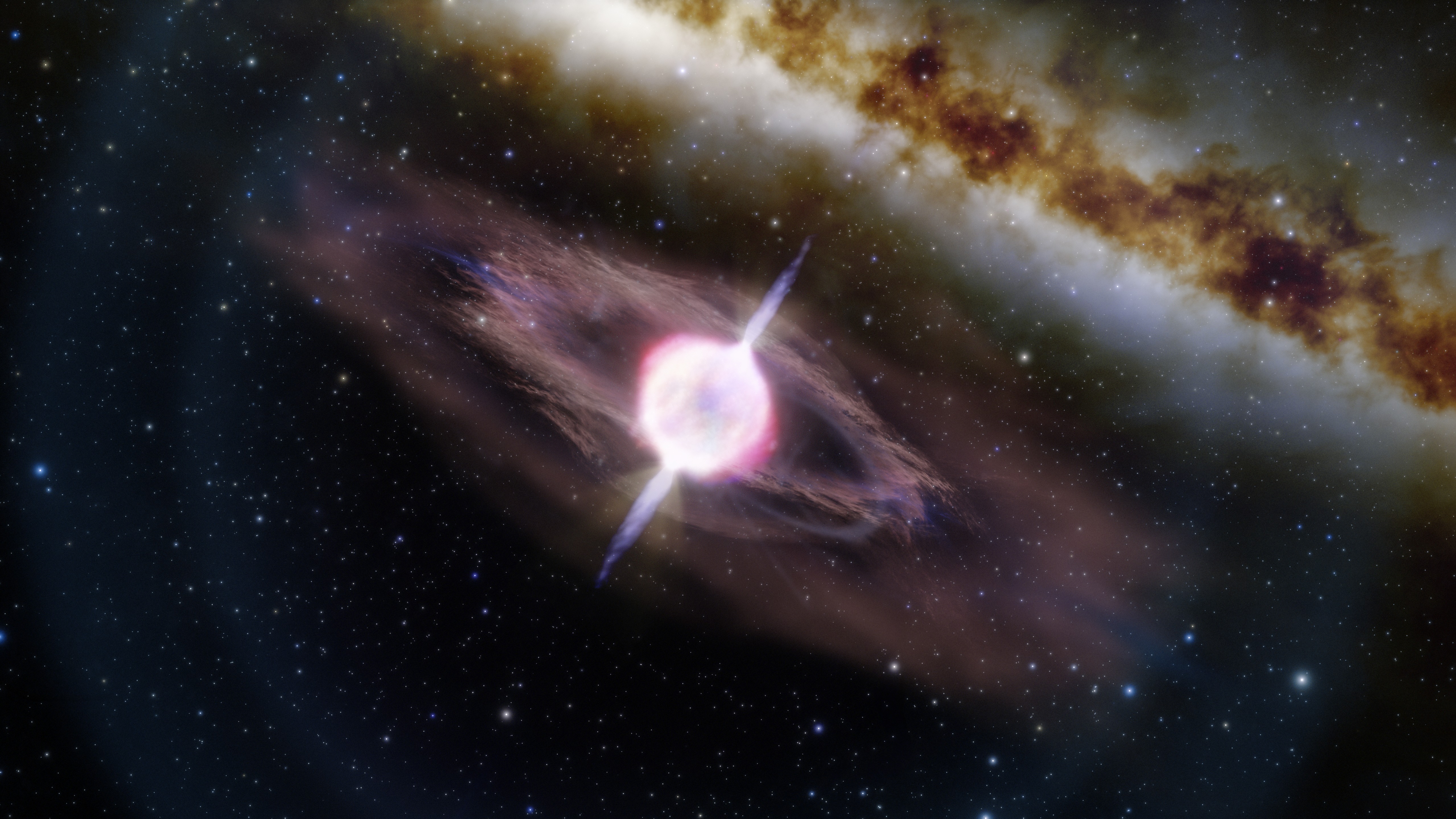
The ‘Brightest of All Time’ Gamma-Ray Burst and Its Ordinary Supernova
A team of astronomers using the Gemini South telescope, one half of the International Gemini Observatory operated by NSF’s NOIRLab, have observed the ‘brightest of all time’ long gamma-ray burst. Using the Gemini South Multi-Object Spectrograph (GMOS), the team found that although GRB 221009A exhibits a jet structure as rare as it is bright, its associated supernova is surprisingly ordinary.
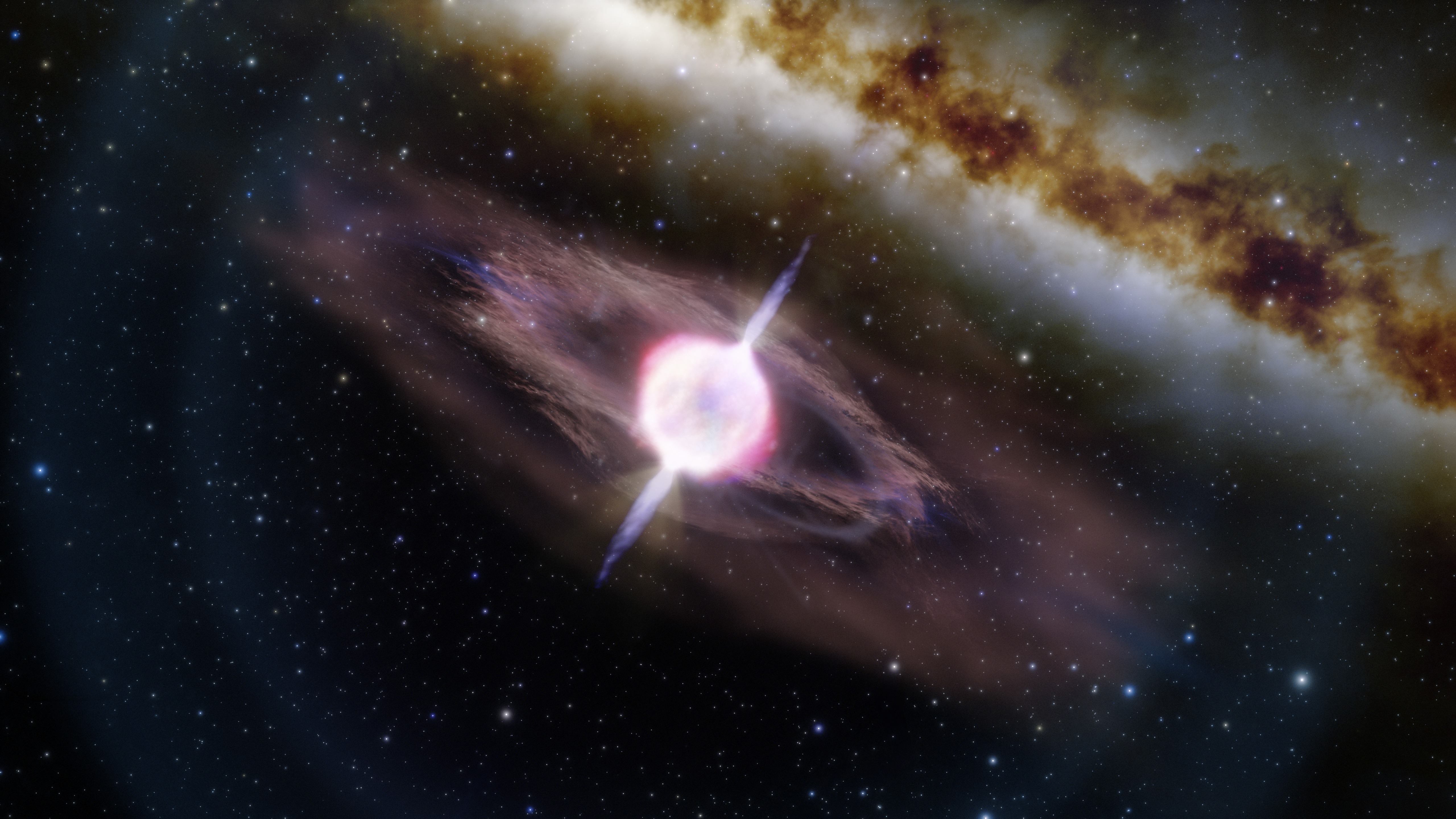
La explosión de rayos gamma “más brillante de todos los tiempos”
Un equipo de astrónomos observó la explosión de rayos gamma “más brillante de todos los tiempos” con el telescopio Gemini Sur, la mitad austral del Observatorio Internacional Gemini que opera NOIRLab de NSF. Gracias al Espectrógrafo Multi Objetos de Gemini Sur (GMOS por sus siglas en inglés), el equipo descubrió que, a pesar que GRB 221009A presentaba una estructura de jet tan inusual como su brillo, su supernova no era nada fuera de lo común.
Galactic explosion offers astrophysicists new insight into the cosmos
Using data from the James Webb Space Telescope’s first year of interstellar observation, an international team of researchers was able to serendipitously view an exploding supernova in a faraway spiral galaxy.
Desde Chile identifican una futura Kilonova
Utilizando datos del telescopio SMARTS de 1,5 metros ubicado en Cerro Tololo, un programa de NOIRLab de NSF y Observatorio AURA, un equipo de astrónomos descubrió un sistema estelar que en el futuro formará una kilonova, es decir una explosión ultra poderosa, generadora de oro, que se produce por la fusión de estrellas de neutrón. Este tipo de sistemas estelares son tan inusuales que se cree que existen apenas cerca de 10 en toda la Vía Láctea.
First Kilonova Progenitor System Identified
Astronomers using data from the SMARTS 1.5-meter Telescope at the Cerro Tololo Inter-American Observatory (CTIO), a Program of NSF’s NOIRLab, have made the first confirmed detection of a star system that will one day form a kilonova — the ultra-powerful, gold-producing explosion created by merging neutron stars. These systems are so phenomenally rare that only about 10 such systems are thought to exist in the entire Milky Way.
Media Tip: Scientists use Argonne accelerator to study star-like environment created during National Ignition Facility laser shots
The recent achievement of fusion ignition at the National Ignition Facility (NIF) marks a monumental scientific step in controlling the physics involved in the quest for future limitless clean energy.
Deep-Space Discovery: Oddball Gamma-Ray Burst Forces Revision of Theoretical Framework
In the Dec. 7 issue of the journal Nature, an international team of astrophysicists report the discovery of a unique cosmological gamma-ray burst (GRB) that defies prevailing theories of how the violent cosmic explosions form.
GW PhD Student Plays Key Role in Gamma-Ray Burst Discovery
WASHINGTON (Dec. 7, 2022) – The recent discovery of a long gamma-ray burst (GRB) triggered by the collision of two neutron stars challenged the scientific consensus on the cause of that cosmic phenomenon. Brendan O’Connor, a sixth-year PhD student in…
Kilonova Discovery Challenges our Understanding of Gamma-Ray Bursts
While studying the aftermath of a long gamma-ray burst (GRB), two independent teams of astronomers using a host of telescopes in space and on Earth, including the Gemini North telescope on Hawai‘i and the Gemini South telescope in Chile, have uncovered the unexpected hallmarks of a kilonova, the colossal explosion triggered by colliding neutron stars. This discovery challenges the prevailing theory that long GRBs exclusively come from supernovae, the end-of-life explosions of massive stars.
Red-supergiant supernova images reveal secrets of an earlier Universe
An international research team led by the University of Minnesota Twin Cities has measured the size of a star dating back more than 11 billion years ago using images that show the evolution of the star exploding and cooling. The research could help scientists learn more about the early Universe.
Oxygen Formation in the Light of Gamma Beams
Nuclear fusion reactions in stars consume carbon-12 to produce oxygen-16, and the resulting ratio of carbon to oxygen shapes a star’s evolution. Physicists have not been able to measure this ratio with precision using existing experimental methods. A new method shines gamma beams on an oxygen-16 target and captures images of the outgoing reaction products to obtain higher-quality data on this reaction.
Extraterrestrial stone brings first supernova clues to Earth
New chemistry ‘forensics’ indicate that the stone named Hypatia from the Egyptian desert could be the first tangible evidence found on Earth of a supernova type Ia explosion.
Rerun of Supernova Blast Is Expected to Appear in 2037
Hubble astronomers are predicting that the fading light from a distant supernova will be rebroadcast in 16 years. This future appearance will be the fourth known view of the same exploded star, dubbed Supernova Requiem.
Stellar Collision Triggers Supernova Explosion
The Very Large Array Sky Survey gave astronomers the first clue that ultimately revealed a dramatic story — the remnant of a star that exploded long ago had plunged into the core of its companion star causing it, too, to explode as a supernova.
Rutgers Expert Available to Discuss Supernova Discovery
New Brunswick, N.J. (April 21, 2021) – Rutgers University–New Brunswick astrophysicist John P. (Jack) Hughes is available for interviews on a supernova (exploding star) discovery published today in the journal Nature. The discovery, made with NASA’s Chandra X-ray Observatory, features…
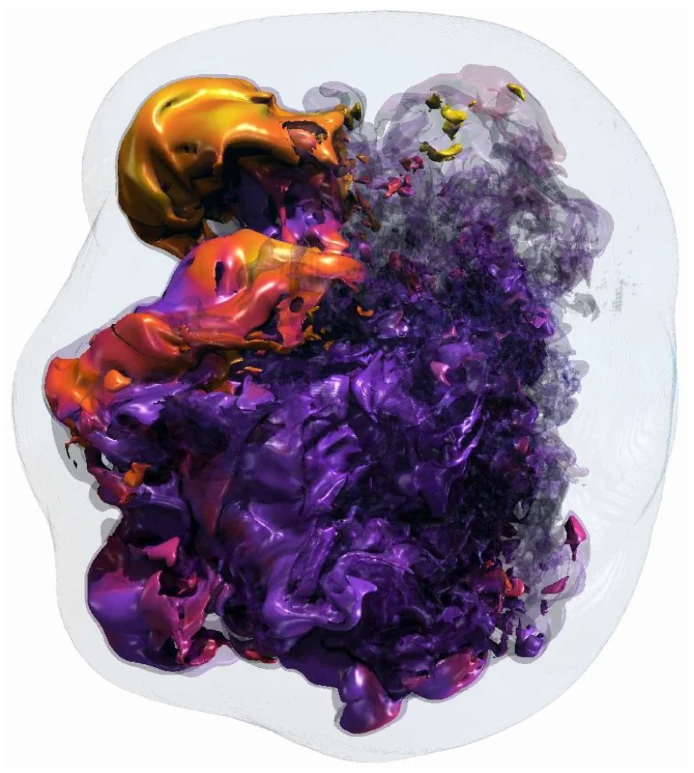
HPC Explorations of Supernova Explosions Help Physicists Reach New Milestones
Physicists have been studying the question of how supernova explosions occur for more than 60 years. Thanks to the increasing power of supercomputing resources such as those at the National Energy Research Scientific Computing Center at Lawrence Berkeley National Laboratory, they’re moving ever closer to an answer.
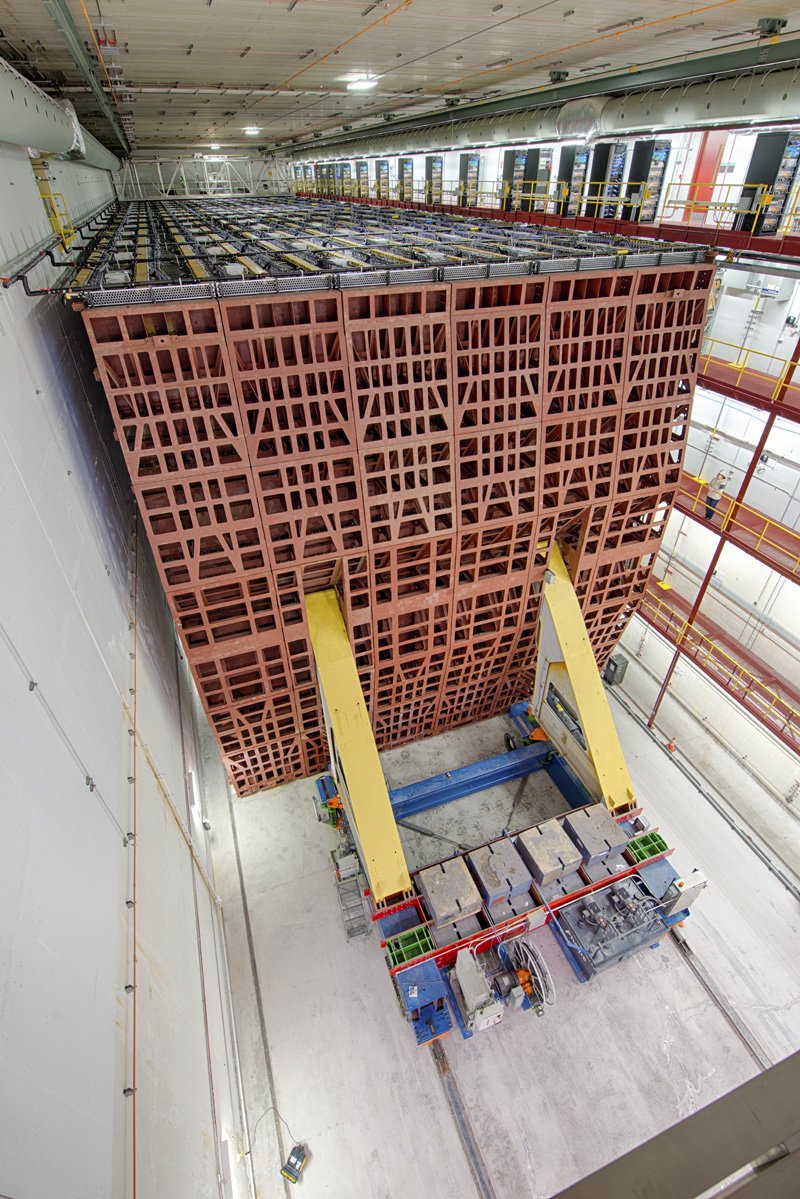
NOvA turns its eyes to the skies
The NOvA experiment, best known for its measurements of neutrino oscillations using particle beams from Fermilab accelerators, has been turning its attention to measurements of cosmic phenomena. In a series of results, NOvA reports on neutrinos from supernovae, gravitational-wave events from black hole mergers, muons from cosmic rays, and its search for the elusive monopole.
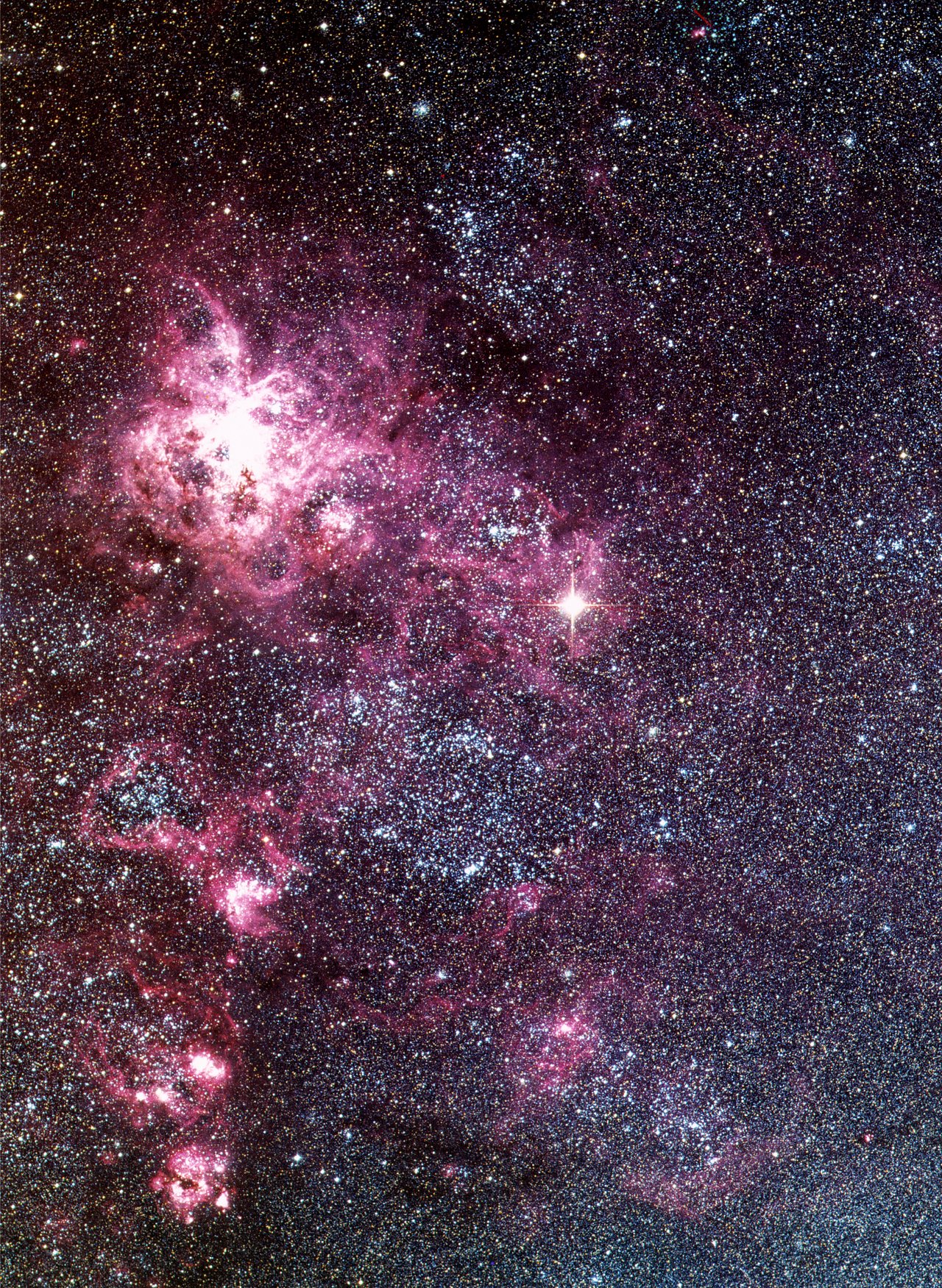
If Betelgeuse goes boom: How DUNE would respond to a nearby supernova
The red supergiant Betelgeuse is one of the best candidates for a nearby supernova in the coming decades. The star’s proximity to Earth would present a unique opportunity for studying the physics of supernovae and neutrinos. If Betelgeuse does explode, DUNE will be ready.
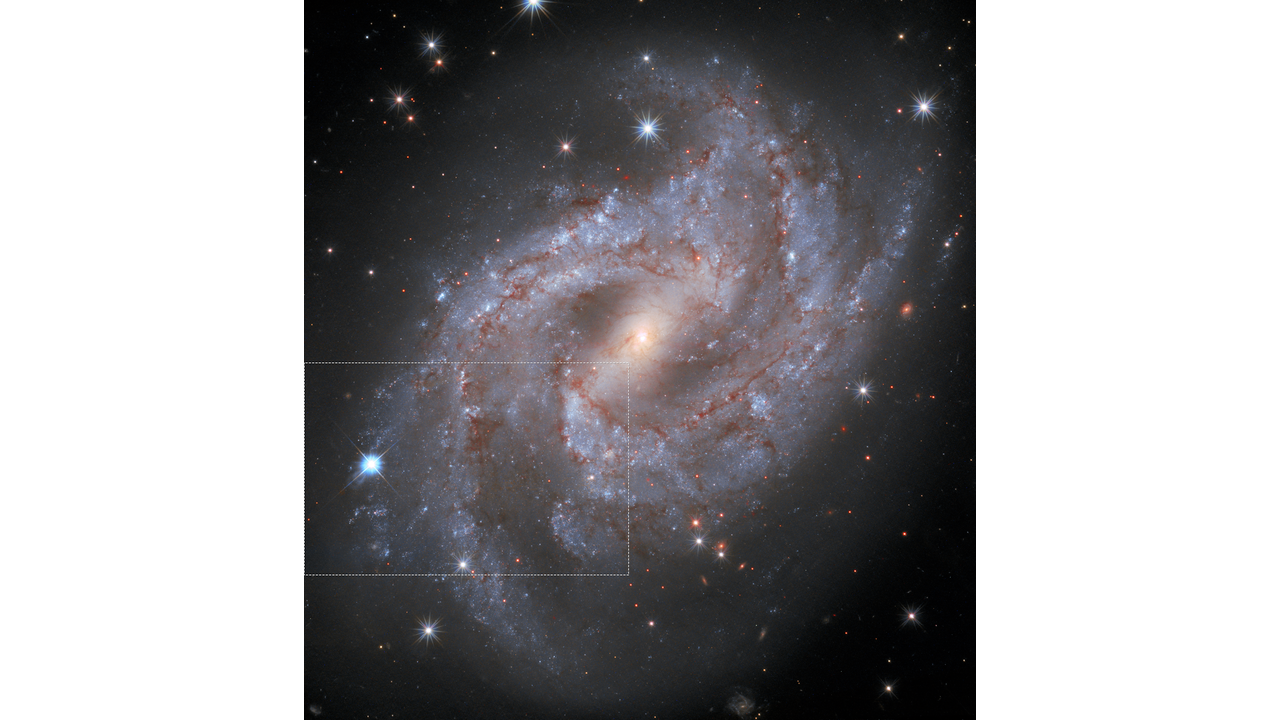
Hubble Watches Exploding Star Fade into Oblivion
Hubble Space Telescope images have been assembled into a time-lapse video of an exploding star fading into oblivion inside a distant galaxy. The video compresses one-year’s worth of observations into seconds. When it exploded the supernova was as bright as 5 billion Suns.
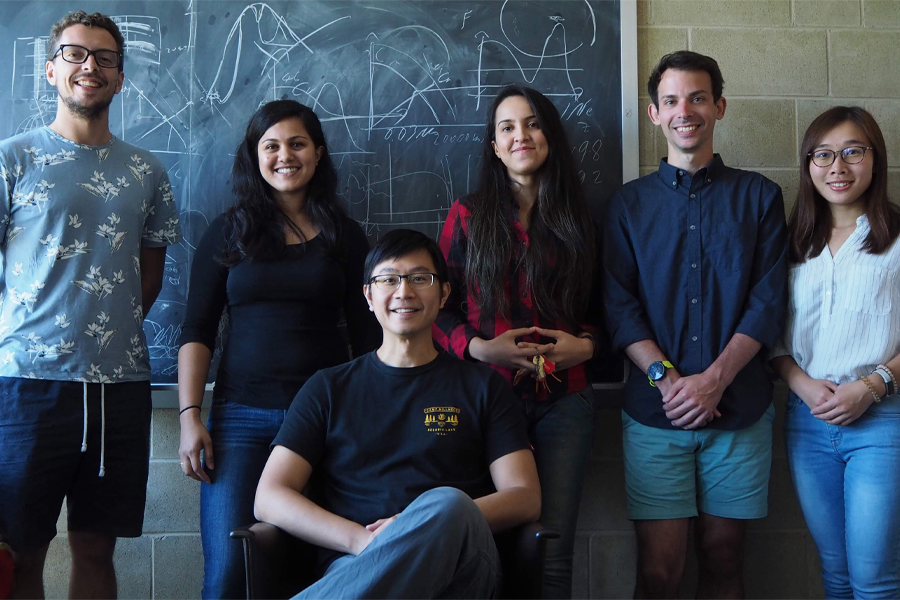
FSU-led research team discovers unique supernova explosion
One-hundred million light years away from Earth, an unusual supernova is exploding. That exploding star — which is known as “supernova LSQ14fmg” — was the faraway object discovered by a 37-member international research team led by Florida State University Assistant Professor of Physics Eric Hsiao.

Searching for supernova neutrinos with DUNE
The international Deep Underground Neutrino Experiment collaboration has published a paper about its capability for performing supernova physics. It details the kind of activity DUNE expects in the detector during a supernova burst, how DUNE will know once a supernova occurs and what physics DUNE will extract from the neutrinos. DUNE’s unique strength is its sensitivity to a particular type of neutrino called the electron neutrino, which will provide scientists with supernova data not available from any other experiment.
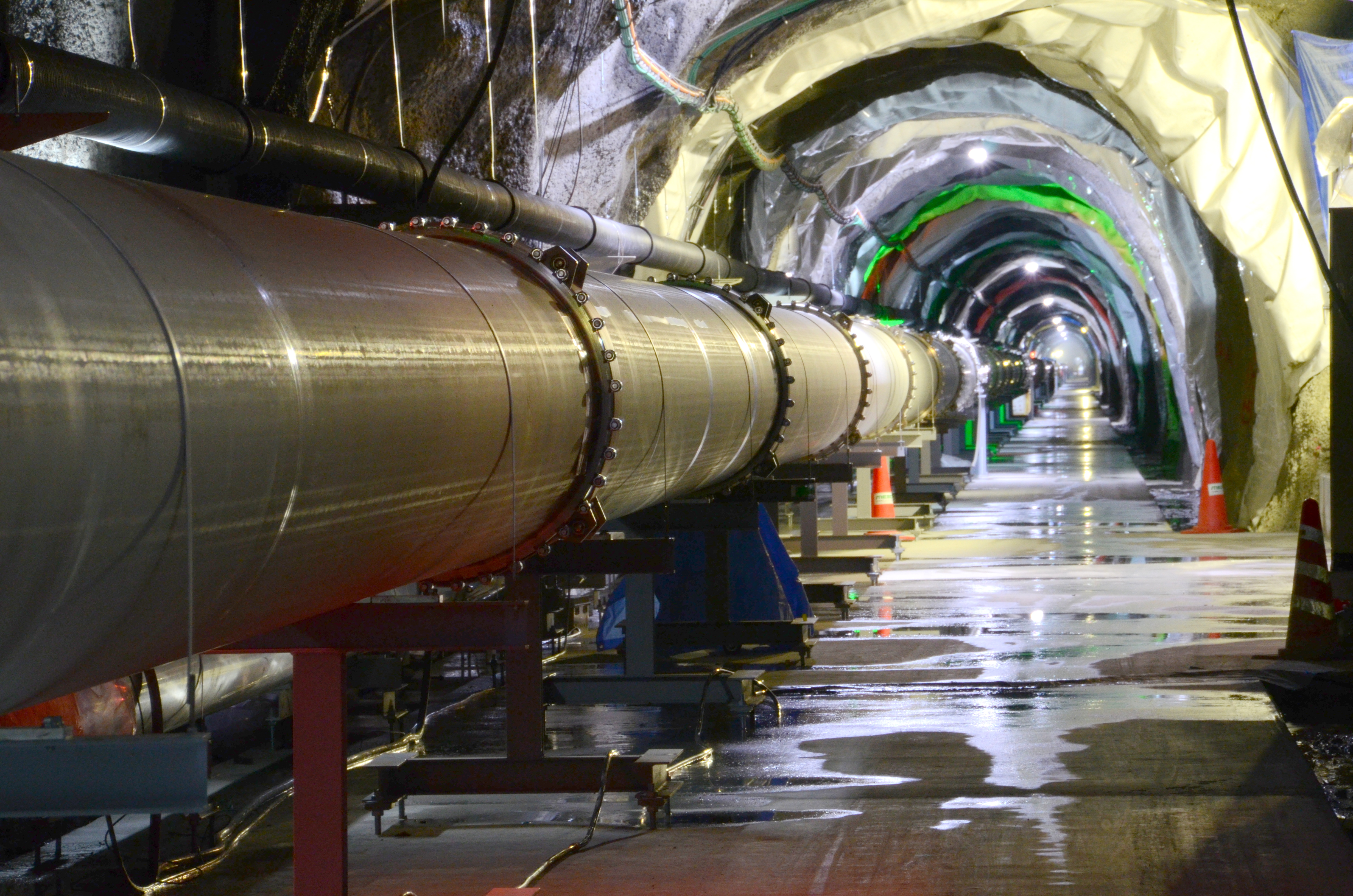
New NSF Physics Frontier Center Will Focus on Neutron Star Modeling in ‘Gravitational Wave Era’
A new Physics Frontier Center at UC Berkeley, supported by the National Science Foundation, expands the reach and depth of existing capabilities on campus and at neighboring Berkeley Lab in modeling one of the most violent events in the universe: the merger of neutron stars and its explosive aftermath.
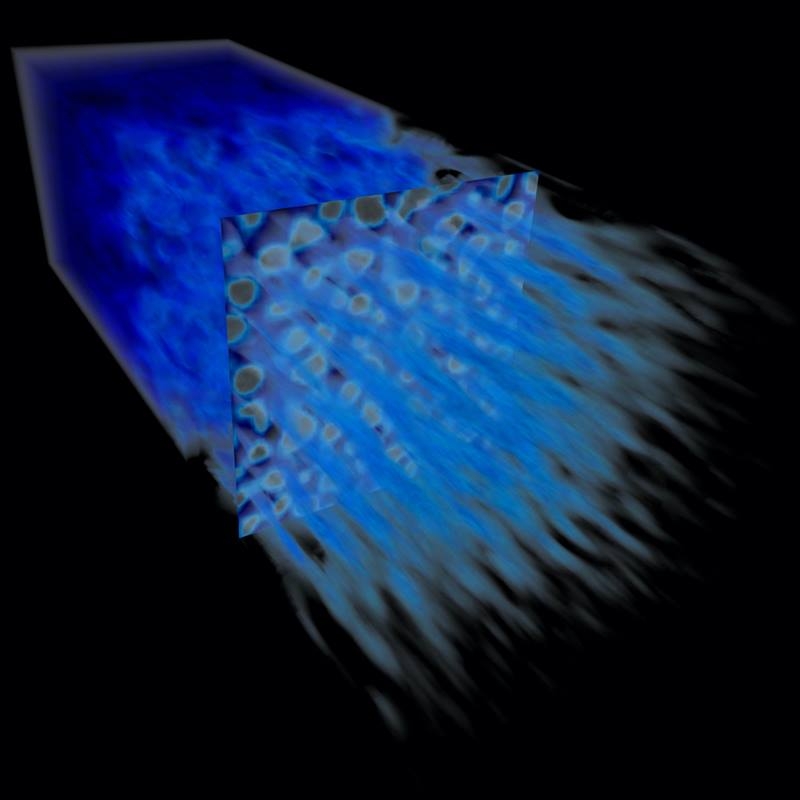
Lab-Created Shock Waves Mimic Supernova Particle Accelerators
When stars explode as supernovas, they produce shock waves in the plasma that blast cosmic rays into the universe at relativistic speeds. How exactly they do that remains a mystery. New experiments using powerful lasers have recreated a miniature version of these supernova shocks in the lab, where scientists can observe how they accelerate particles.

ALMA Finds Possible Sign of Neutron Star in Supernova 1987A
Based on ALMA observations and a theoretical follow-up study, scientists suggest that a neutron star might be hiding deep inside the remains of Supernova 1987A.
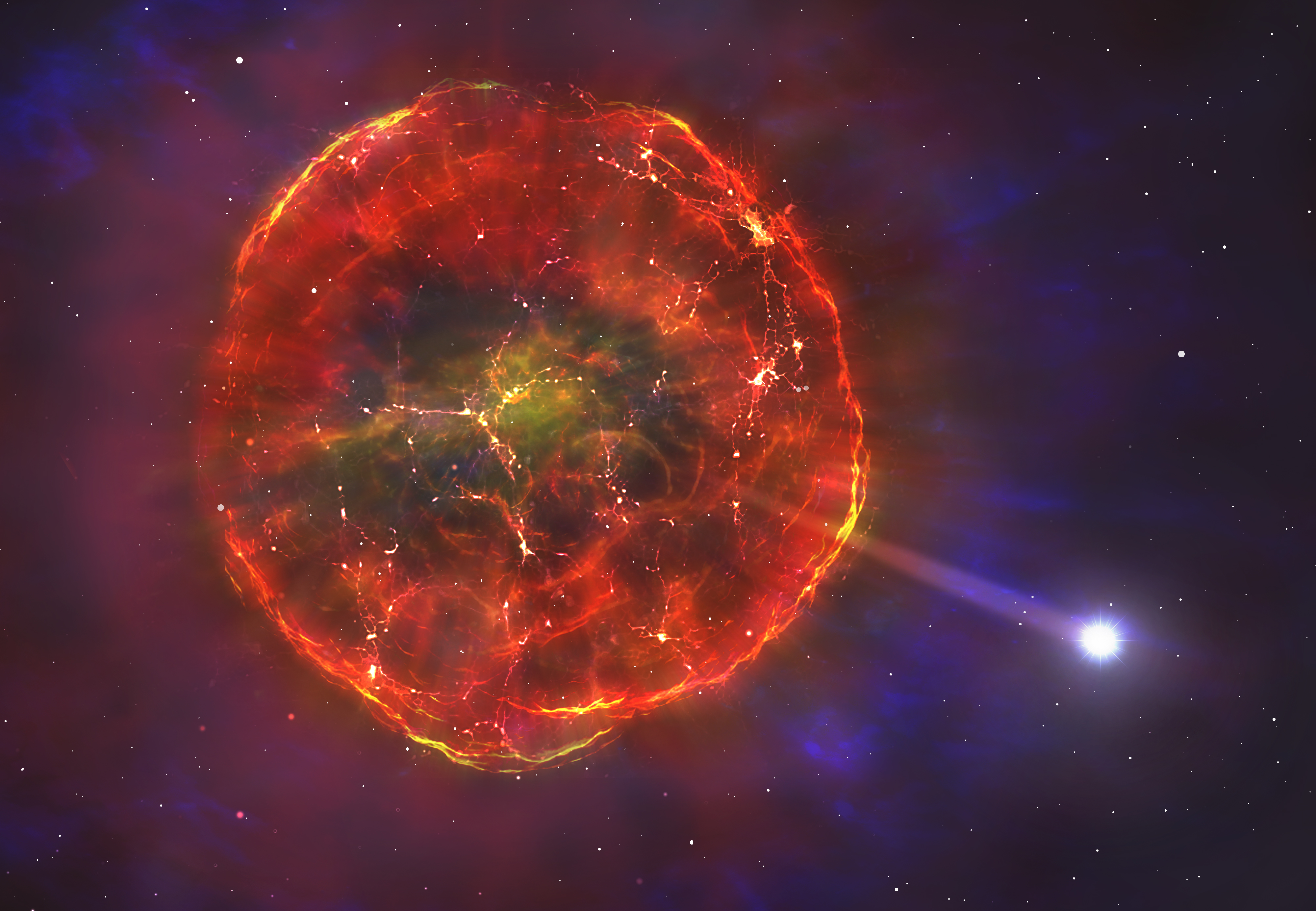
Thermonuclear blast sends supernova survivor star hurtling across the Milky Way
Bizarre white dwarf star shows evidence of a ‘partial supernova’ in observations using the Hubble Space Telescope, led by University of Warwick astronomers
Supergiant Atmosphere of Antares Revealed by Radio Telescopes
An international team of astronomers has created the most detailed map yet of the atmosphere of the red supergiant star Antares. The unprecedented sensitivity and resolution of both the Atacama Large Millimeter/submillimeter Array (ALMA) and the National Science Foundation’s Karl G. Jansky Very Large Array (VLA) revealed the size and temperature of Antares’ atmosphere from just above the star’s surface, throughout its chromosphere, and all the way out to the wind region.
This Supernova in a Lab Mimics the Cosmic Blast’s Splendid Aftermath
(Study publishes 6/17/20. No embargo.) Mystery enshrouds the birth of swirls typical for supernova remnants like the Crab Nebula. A new “supernova machine” may help solve it.
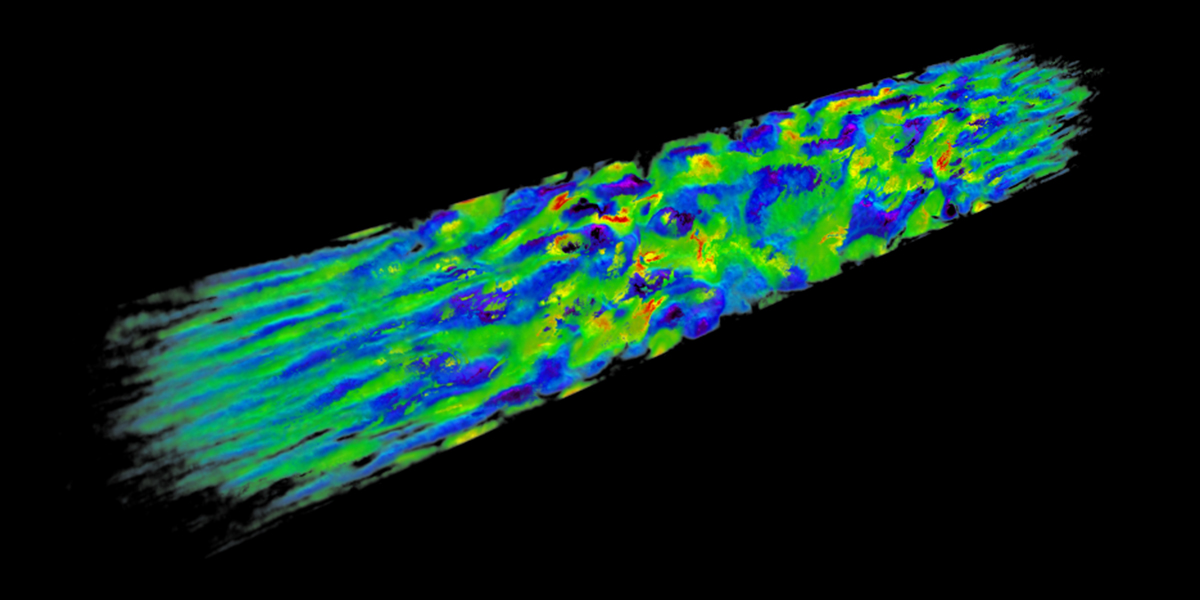
Shock waves created in the lab mimic supernova-powered particle accelerators
In experiments at the National Ignition Facility, a SLAC-led team found new details about how supernovas boost charged particles to nearly the speed of light.

How to Build a 3D Map of the Universe – and Why
In the 1980s, Saul Perlmutter at the Department of Energy’s (DOE) Lawrence Berkeley National Laboratory (LBNL) and his collaborators realized that they could use data about supernovae to research the history of the universe. They expected to see that very distant supernovae appear a bit brighter than they would in an expanding universe that wasn’t slowing in its growth.
The data revealed something else entirely.

Automated Observing Network Inaugurated at SOAR Telescope
To provide astronomers with a network of world-class telescopes that can be accessed with a touch of a button, four ground-based astronomical observatories have joined forces to set up the Astronomical Event Observatory Network (AEON): Las Cumbres Observatory (LCO), the National Science Foundation’s National Optical Astronomy Observatory (NOAO), the SOAR Telescope, and Gemini Observatory. With AEON, astronomers will be able to automatically follow up on their astronomical objects of interest, with a range of 0.4-meter to 8-meter telescopes, observing in UV light to infrared.

Automated Observing Network Inaugurated at SOAR Telescope
To provide astronomers with a network of world-class telescopes that can be accessed with a touch of a button, four ground-based astronomical observatories have joined forces to set up the Astronomical Event Observatory Network (AEON): Las Cumbres Observatory (LCO), the National Science Foundation’s National Optical Astronomy Observatory (NOAO), the SOAR Telescope, and Gemini Observatory. With AEON, astronomers will be able to automatically follow up on their astronomical objects of interest, with a range of 0.4-meter to 8-meter telescopes, observing in UV light to infrared.